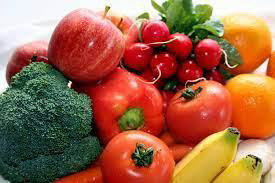Joseph R. Anticaglia MD
Medical Advisory Board
“One in three people will be diagnosed with cancer in their lifetime.;” reports the American Cancer Society (ACS). We can cut down on the odds of getting cancer by incorporating colorful, “phyto” foods into our diet.
The ACS, and other organizations, urges us to include in our diet lots of phyto foods, that is, a variety of colorful, plant foods to reduce the risk of developing cancer. They suggest we include in our diet red, white, and, purple, fruits, and vegetables, such as tomatoes, cauliflower, plums, and berries.
In addition, ACS recommends we incorporate orange and yellow foods, such as yams, yellow peppers, oranges, and lemons into your diet. Dark green spinach and kale are other useful sources of phyto foods. Healthy portions of phyto foods contain cancer fighting phytochemicals and antioxidants.

Phytochemicals are a variety of biologically active compounds found in plants (phyto means plant). These compounds contain antioxidants which protect cells from injury and help reduce the risk of cancer.
In the past, phytochemicals were recognized for their sensory properties. For instance, the aroma of herbs, the color of berries, and the burning sensation of chili peppers.
Today, phytochemicals are notable not only for giving a tomato its color but also for their “bioactive” food properties. They act to neutralize cancer causing agents, protect the breakdown of nutrients, and behave as antioxidants lowering the risk of chronic inflammation, and cancer.
Antioxidants
Antioxidants prevent or delay cell damage. Many phytochemicals have demonstrated antioxidant activity; and play a key role in preventing or delaying disease. Ordinarily, there is a healthy balance between free radicals and antioxidants.
Free radicals are molecules with an uneven number of electrons These oxygen containing molecules can bounce around and damage cells. Antioxidant molecules, found in phyto plant foods, can neutralize free radicals’ instability, and minimize cell damage by donating an electron to a free radical. They accomplish this without destabilizes themselves. However, when free radicals have the upper hand, they can damage DNA, disrupt protein synthesis which can lead to cancer, cardiovascular, and chronic diseases.
Takeaways
“The action of phytochemicals varies by color and type of food,” as noted by Stanford Health Care. “They may function as antioxidants, nutrient protectors, or prevent cancer causing agents(carcinogens) from forming.” They may act in differently, but the objective is the same, reduce the risk of you developing cancer.
The payoff: If you incorporate more fruits and vegetable into your diet, you can significantly reduce the risk of developing cancer. Try filling two thirds of the plate with plant-based foods and one third with lean protein such as fish or poultry. Small changes might make a cancer free difference.
Reference
- Zhang Y, et al. Antioxidant phytochemicals for prevention and treatment of chronic diseases. Molecules. 2015; doi:10.3390/molecules201219753.
- Micah Dorfner; Cut Disease Risk by Adding Color to Your Diet; Mayo Clinic, April 1, 2015
- National Cancer Institute; Eating Hints: Before, During and After Cancer Treatment
Glossary
Examples of Phytochemicals: Isothiocyanates found in broccoli and cauliflower, lycopene in tomatoes, flavonoids in citrus fruits, red wine, capsaicin chili peppers, and curcumin, the yellow spice found in turmeric, all act to reduce cancer risk. Phytochemicals are also found in grains, nuts, and seeds.
This article is intended solely as a learning experience. Please consult your physician for diagnostic and treatment options.

